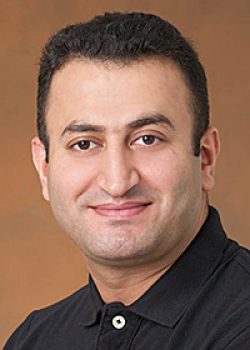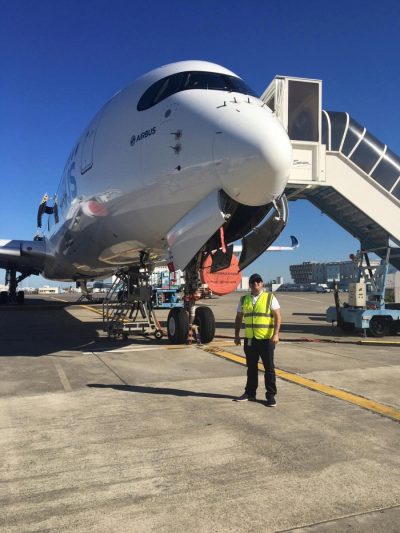 |
| Oktay Arslan, Ph.D. AE '15 |
Daniel Guggenheim School of Aerospace Engineering alumnus Oktay Arslan, PhD '15, is part of a team of Airbus engineers that recently pulled off the first-ever fully automatic, vision-based autonomous taxi, takeoff and landing of a commercial aircraft.
The two-year Airbus Autonomous Taxi, Takeoff and Landing (ATTOL) project concluded late last month with the successful runway landings of an Airbus A350 passenger aircraft at Toulouse-Blagnac airport. The flight tests demonstrated the use of onboard image recognition technologies for the automation of the the taxi, take-off, and landing.
"Of the three - taxiing, takeoff, and landing - the most challenging one to automate is landing. The aircraft’s localization system needs to be very precise, but the speeds at which you are traveling can make it easy to miss the runway," said Arslan, a senior AI/robotics software engineer with Acubed, the Silicon Valley innovation center of Airbus.
"Our team, Project Wayfinder, supported the ATTOL project with the development of the Neural Landing System (NLS) software, a deep learning-based technology that detects runways and localizes the aircraft with respect to the runway. For the first time, Project Wayfinder’s software -- embedded on an A350-1000 aircraft -- was used to guide the aircraft during landing."
 |
| Oktay Arslan, Ph.D AE '15, is seen here with the A350 aircraft that used Wayfinder software to land last month. |
Arslan explained that there are already landing system technologies such as the Instrument Landing System (ILS), which can be used to land aircraft autonomously. However, not all airports are equipped with ILS, which inherently limits the autonomous landing capability of aircraft. The technologies developed within ATTOL use inexpensive onboard sensors (e.g. IMUs, cameras) and do not rely on any ground-based instruments.
Back at Georgia Tech, Arslan's thesis advisor, Prof. Panagiotis Tsiotras, praised his former student's work, which makes use of several different machine learning models and low-level optimizations to run the perception system in real-time on the embedded hardware.
"This trial showcases - for the first time - that it is doable to include learning components within high-performance and safety critical control loops such as in avionics systems," said Tsiotras. "The particular test brings autonomous aviation platforms such as taxiing, takeoff and landing one step closer to being technologically feasible and commercially viable."
Launched in June 2018, ATTOL aimed to explore autonomous technologies - including machine learning algorithms and automated tools for data labeling, processing and model training - to understand the impact of autonomy on aircraft operations. Ultimately, these technologies have the potential to help pilots focus less on aircraft operations and more on strategic decision-making and mission management.
The ATTOL project conducted many vision-based flights using on-board image recognition technology to gather raw video data, fine-tune algorithms, and test autonomous flight capabilities. Airbus is now able to analyze the potential of these technologies to enhance future aircraft operations, all while improving aircraft safety.
Arslan said Acubed’s Project Wayfinder has a bright future in the aviation field, where a chronic shortage of pilots can limit the accessibility of new flight technologies.
"Autonomous technologies relieve that pressure, because they have the potential to lessen the need for additional pilots onboard in order to fly large aircraft," he said.
The Wayfinder team developed the sense-and-avoid system on board Project Vahana, which developed and flight tested an all-electric, self-piloted vertical take-off and landing single passenger demonstrator. The team was spun out as a stand-alone project in 2018 as it became evident that the technologies they had developed could also greatly benefit commercial aircraft.
“I am convinced that autonomous flight and machine learning solutions will enable self-piloted aircraft operations in the future, from self-flying taxis to large commercial airliners. And it’s truly a fascinating space to work in,” concluded Arslan.
Related links: